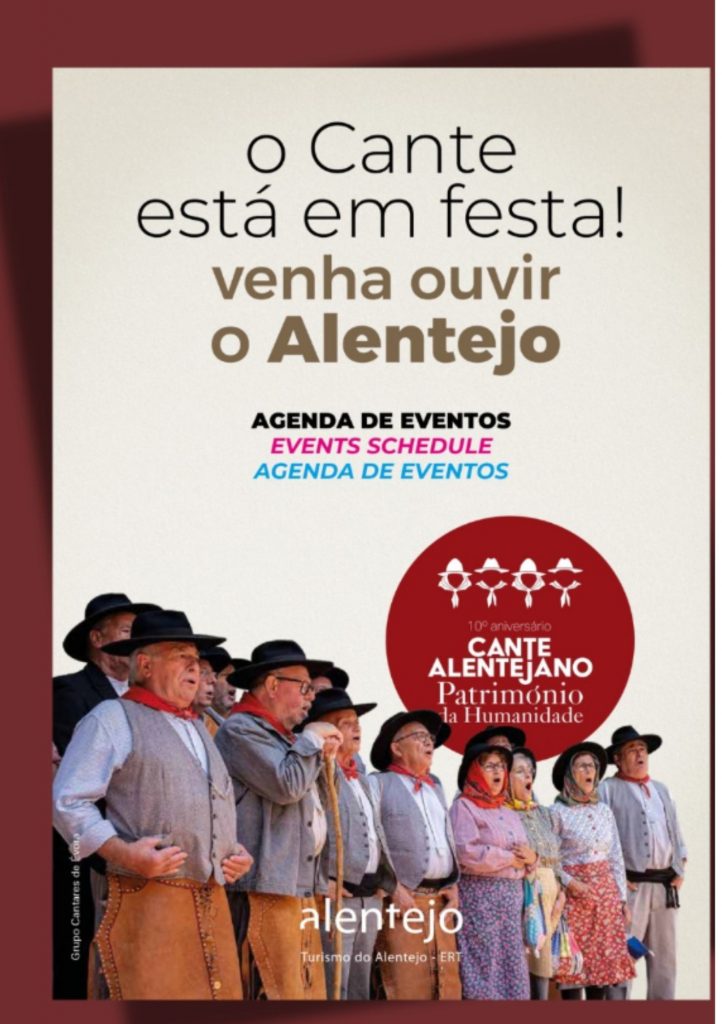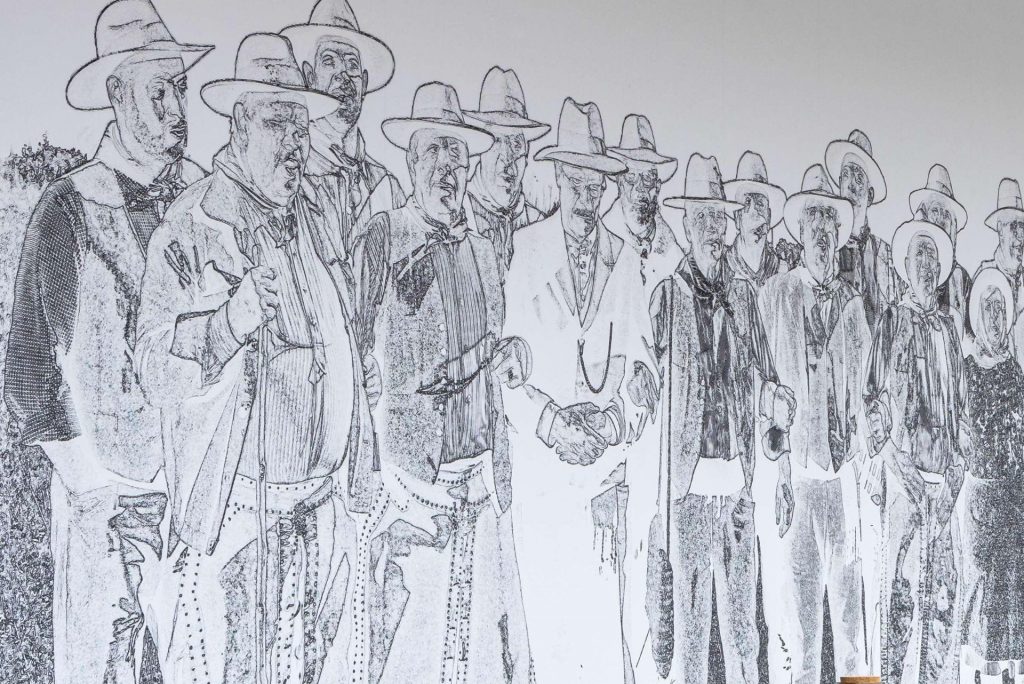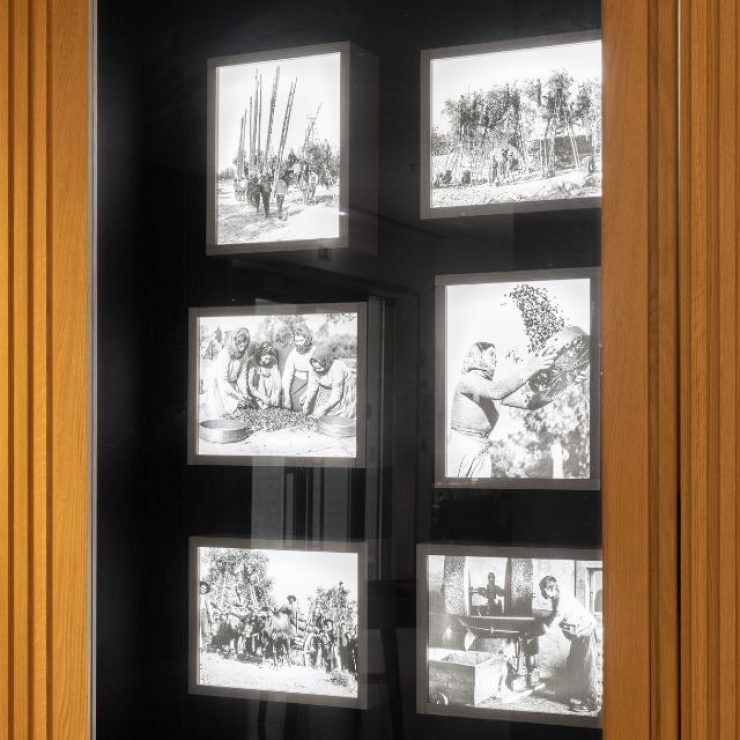On November 27, 2014, Cante Alentejano was classified as Intangible Cultural Heritage of Humanity by the United Nations Educational, Scientific and Cultural Organization (UNESCO), following a candidacy submitted by the Serpa Municipality and the Alentejo and Ribatejo Regional Tourism Entity. Last year, we celebrated 10 years of Cante Alentejano as a UNESCO heritage, across Alentejo and Lisbon.
Évora also hosted the celebration with a children’s workshop and a debate at Salão Central Eborense.

Image: Turismo do Alentejo
What is Cante Alentejano?

Its origins remain unknown.
Cante Alentejano is a traditional two-part singing style performed by amateur choral groups without musical instruments.
These groups can have up to 30 singers, divided into three roles: the “ponto” starts the melody, followed by the “alto,” which duplicates the tune a third or a tenth above, often adding ornaments. The entire choir then joins in, singing the remaining verses in parallel thirds. The alto is the guiding voice that stands out above the group throughout the song.
The lyrics explore themes such as rural life, nature, love, motherhood, and religion, adapting to cultural and social changes.
Transmission occurs mainly during rehearsals, where older members pass it down to younger generations.
A Museum Dedicated to Cante

Image: Serpa Municipality
Stay in a hotel in Évora dedicated to Cante Alentejano and don’t miss the Museum of Cante Alentejano, which was founded in Serpa in 2012.
The museum features an Interpretative Center with a permanent exhibition about Alentejo’s traditional choral singing, a temporary gallery for exhibitions about Cante and local themes, and a documentation center dedicated to Manuel Dias Nunes (1809), a Serpa merchant who published the magazine A Tradição. Between 1899 and 1904, he edited the first Alentejo songbook. The museum also has an auditorium where choral groups perform, and a gift shop.
There are plenty of reasons to visit and learn more about this UNESCO-recognized art form.
Cante Alentejano Groups
Most choral groups consist of men, but there are also all-female, mixed, and children’s and youth groups linked to schools.
João Matias, anthropologist and coordinator of the Cante Alentejano Museum, stated in an interview in November 2024 that there are currently 164 active Cante Alentejano groups, totaling 3,105 singers. Most are concentrated in the Beja district (about 60% of the total), followed by Évora and Lisbon.
Évora 2027
Évora 2027 – Évora and Alentejo will be the European Capital of Culture.
Being the European Capital of Culture gives cities the opportunity to strengthen their sense of community and belonging, regenerate and requalify their spaces, and use culture to boost the local economy and build a shared future. It deepens the meaning of diversity, showcasing what makes us unique while highlighting what connects us as Europeans.
Now is the time for “vagar” – the slow, meaningful enjoyment of life.
A time to focus on what truly matters.
Lose yourself in Évora, take your time.
Surrender to the moment.
Enjoy simply observing, taking in the aromas and flavors of Alentejo’s gastronomy, wines, and olive oils. Listen to the Cante, the people, and discover its culture and art.
_
Discover Cante Alentejano & Évora from Évora O Cante Hotel.




